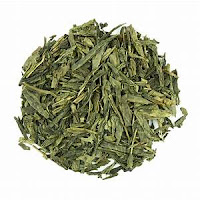This is one of my all time favorite plants. And, they are surprisingly easy to grow.
Plumerias are a genus of flowering trees in the dogbane
family. They are native to tropical
America from Brazil to Mexico and the Caribbean. Growing in tropical ground, they can get to
be upwards of 30 feet tall. They bloom from
spring through fall in beautiful colors like white, yellow, pink, and red and
variations of those colors.
Plumerias have a dozen other names, like: Tipanier in Tahiti;
Dok champa in Laos; Jepun in Bali; Pumeli or Melia in Hawaii; Sacuanjoche in
Nicaragua; and Graveyard Tree in the Caribbean Islands. And, they are close cousins to hemp,
periwinkle, oleander, natal plum, milkweed, star jasmine, mandevilla, plus
about 400 more flowering plants.
Star Jasmine
Bonus! you don’t have to live in the tropics to grow
plumerias. While the plants are fairly
tolerant of both salt and windy conditions, they’re not tolerant of cold and could
die in temperatures below 40°. They do,
however, lend themselves easily to be grown in containers. Or once all chance of cold temps are done,
plant them in the ground. Of course, if
you do this, you will have to dig it up come chilly weather. And, that works pretty well too. Once dug up, hang
top down in a protected area – then replant again in the spring.
Myself, I just keep mine in pots until they get too big for
me to manage, then I take cuttings and plant them in the ground and tell them
to hunker down and hold on. Depends on our winter – sometimes it works,
sometimes not.
So, planting in ground or pot – they are happiest in a well-draining
soil in a place that gets a minimum of 6 hours of sun. During the growing season plumerias like
regular watering although they don’t like “wet feet” and are prone to root
rot. They also are heavy feeders. Fertilize monthly with a high phosphate
(phosphorus) fertilizer, like 10-30-10 to encourage blooms. Giving them too
much nitrogen will result in beautiful foliage growth but fewer flowers.
In areas where the weather turns chilly, most plumerias will
go dormant come November or so. Stop
fertilizing at the end of the growing season (here that would be September/early
October) and reduce watering. By early
winter they should not need any water – just protected until the next spring.
They are easily propagated by either seed or stick. So, if you want a “clone”, cut a branch off
your plumeria. Let it dry out for a few
days then dip the end in a growth hormone and plant in a pot filled with a coarse soil mixture of regular potting soil with pumice, poultry grit or
perlite added. Growing from seed is a
little more challenging and the resulting plant may not have the same flower as
the “mother”. And, you’ll have the wait
a minimum of 3-5 years before you’re likely to see any blooms.
These little guys are
not yet a year old
And this big one is
about five. I’ve
pretty much told it now is
the time
to bloom or else!
to bloom or else!
What else – how about some useless information –
1. They
won’t burn except in extreme (over 500°) temperatures
2. In
some cultures the leaves are used as poultices for bruises and ulcers and the latex
is used as a liniment for rheumatism
3. It’s
used in love spells
4. Ghosts
may live in the trees with white flowers.
Take care

























































